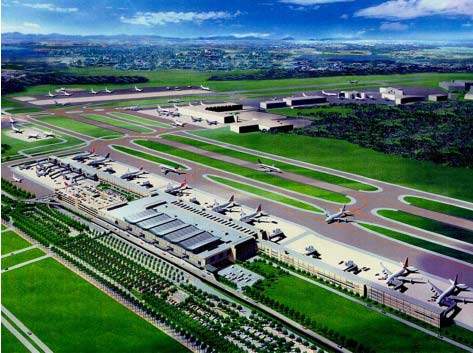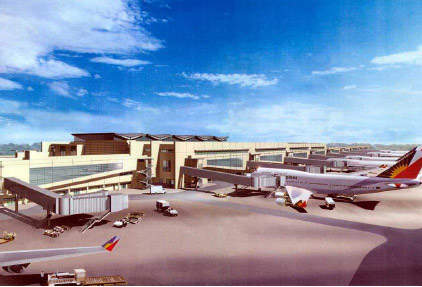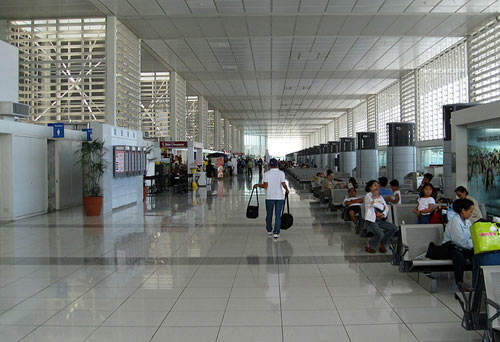Ninoy Aquino International Airport is the main international gateway of the Philippines. The airport is located along the border of the country between Pasay City and Parañaque City about 7km south of Manila and south-west of the Central Business District of Makati City.
The airport is administered by the Manila International Airport Authority (MIAA), part of the Department of Transportation and Communications (DOTC), and is one of the busiest airports in South East Asia.
In 2009 it handled approximately 24.1m passengers.
Aiport growth
The airport moved to its current site in 1948, with the original terminal later replaced by the new Terminal 2 building .
In 1973 the airport underwent a redesign to update its facilities, with Airways Engineering recommending a new Terminal 1 building. Construction companies Renardet-Sauti, Transplan and FF Cruz Consultants along with architects firm, LV Locsin and Associates carried out engineering and design for the new project.
Construction began in 1978. In 1981, a fire damaged one of the older terminal buildings, which was soon replaced by the new 67,000m² Terminal 1, capable of handling 4.5m passengers per year.
In 1989, during an expansion review by Aéroports de Paris, the construction of two new terminals – the Centennial Terminal and Terminal 3 – was advised. By 1991, Terminal 1 started to reach capacity with a recorded annual growth rate of 11%.
The centennial terminal
Construction of the Centennial Terminal (to mark the 100 year anniversary of Philippine independence) started in December 1995 and was completed by 1998, with operations beginning in 1999.
The Japanese Government loaned JPY18.12bn to the Philippine Government to cover 75% of the project’s cost.
Aéroports de Paris designed the terminal. With a floor space of 75,000m², it was originally designed as a domestic terminal, but was later changed to accept international flights.
With a total capacity of 7.5m passengers per year (2.5m international and 5m domestic), it is possible to accommodate 9m passengers per year if required.
Construction halt
Construction of the Terminal 3 project started in 1997. There was a halt in construction when, in 2003, the Philippine President, Government and Supreme Court declared the Build Operate Transfer (BOT) contract void.
A resolution was achieved in 2007 and the terminal was officially opened in July 2008.
BOT controversy
Due to alleged irregularities in the BOT laws in the Phillipines PairCargo and Fraport AG as the Philippine International Air Terminals Co Inc (PIATCO) were not allowed to complete the construction of the terminals.
The BOT agreement was declared void by the Philippines president, government and Supreme Court in 2003. It was followed by much legal wrangling including the involvement of international courts.
In 2006, PIATCO took a $6m payoff from the Philippines Government, and appointed a new contractor, Takenaka of Japan, to complete the construction work by 2008 (completion costs were $6m).
Terminal 3 plans
The $640m Terminal 3 is 1.2km long with a capacity to handle 13m passengers per year. Its 34 air bridges and 20 contact gates allow it to service 28 planes simultaneously
The terminal has been fitted with state of the-art electronic systems, with 70 FID’s (flight information displays) and 314 LCD display monitors. The departure hall’s five entrances are equipped with X-ray machines.
The final security check area prior to the boarding gates has 18 X-ray machines to minimise inconvenience to boarding passengers. The baggage claim hall has seven large carousels, each with a FID.
A four-level shopping centre connects the terminal to a 2,000 capacity multi-storey car park.
Outdoor parking is also catered for with a capacity of 1,200 cars.
Terminal 3 finance
Financing for the terminal was provided by the Asian Development Bank (ADB) and the Import-Export Bank of Japan with a loan of $500m













